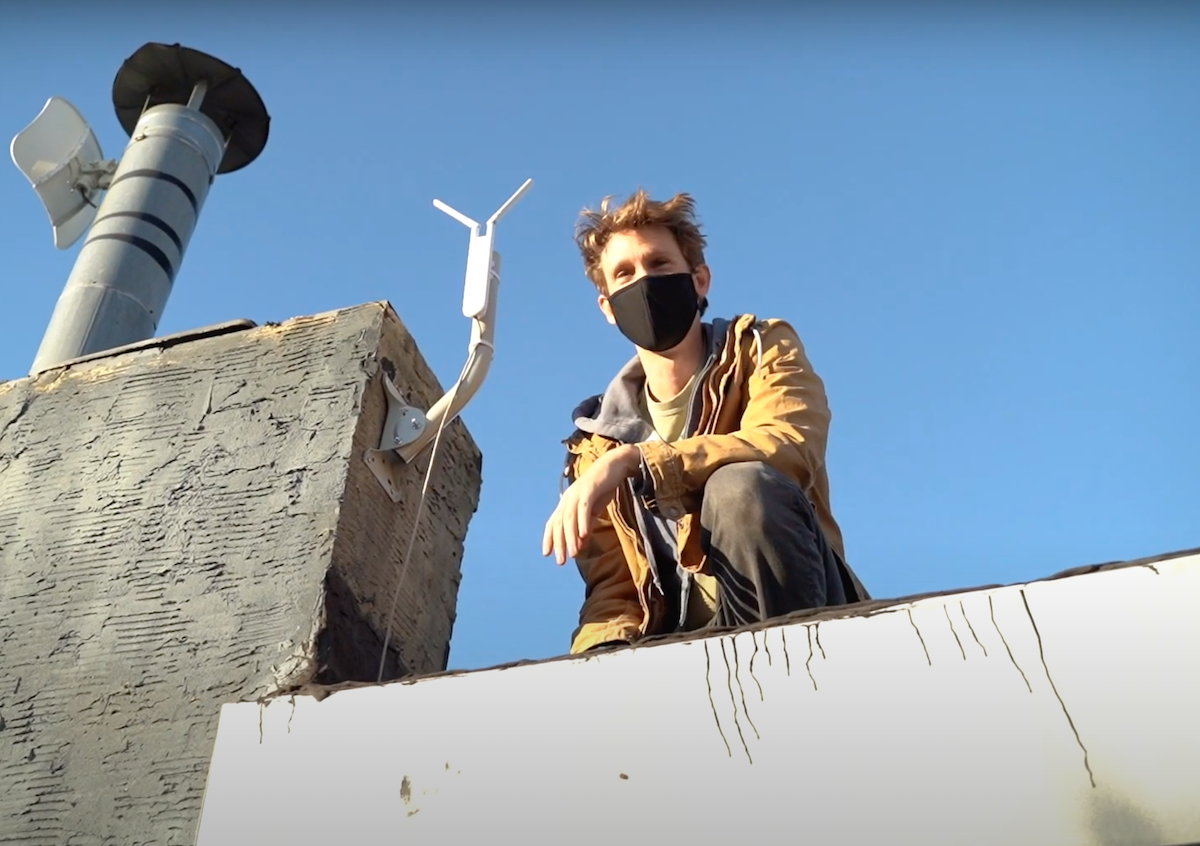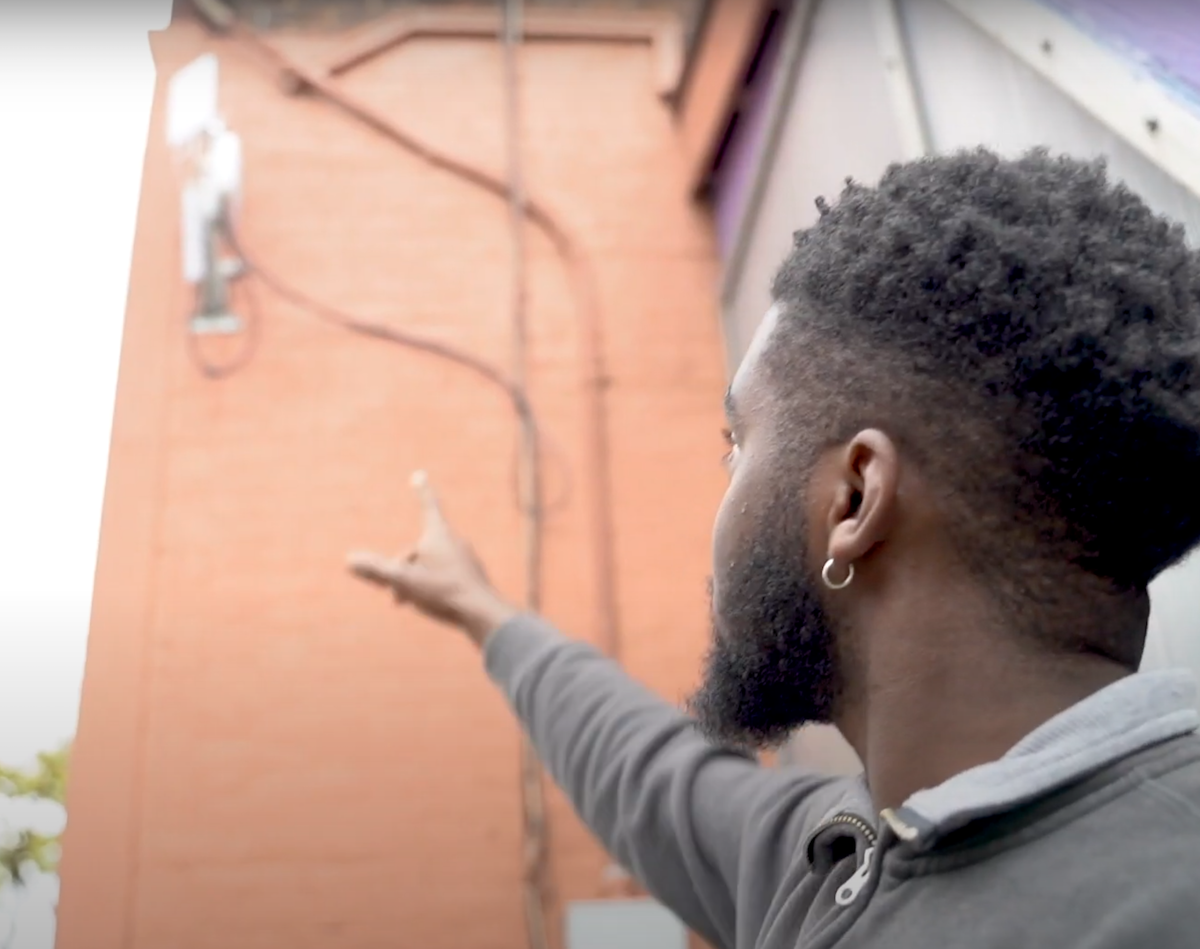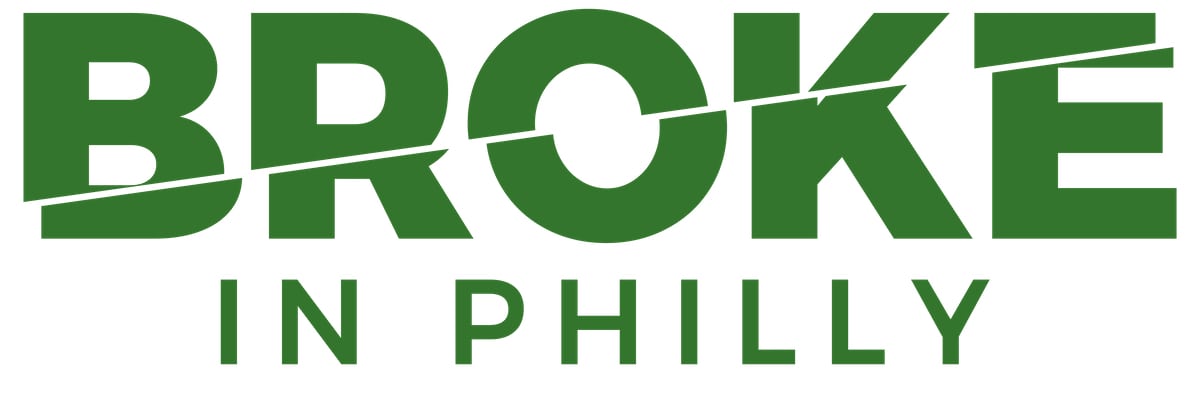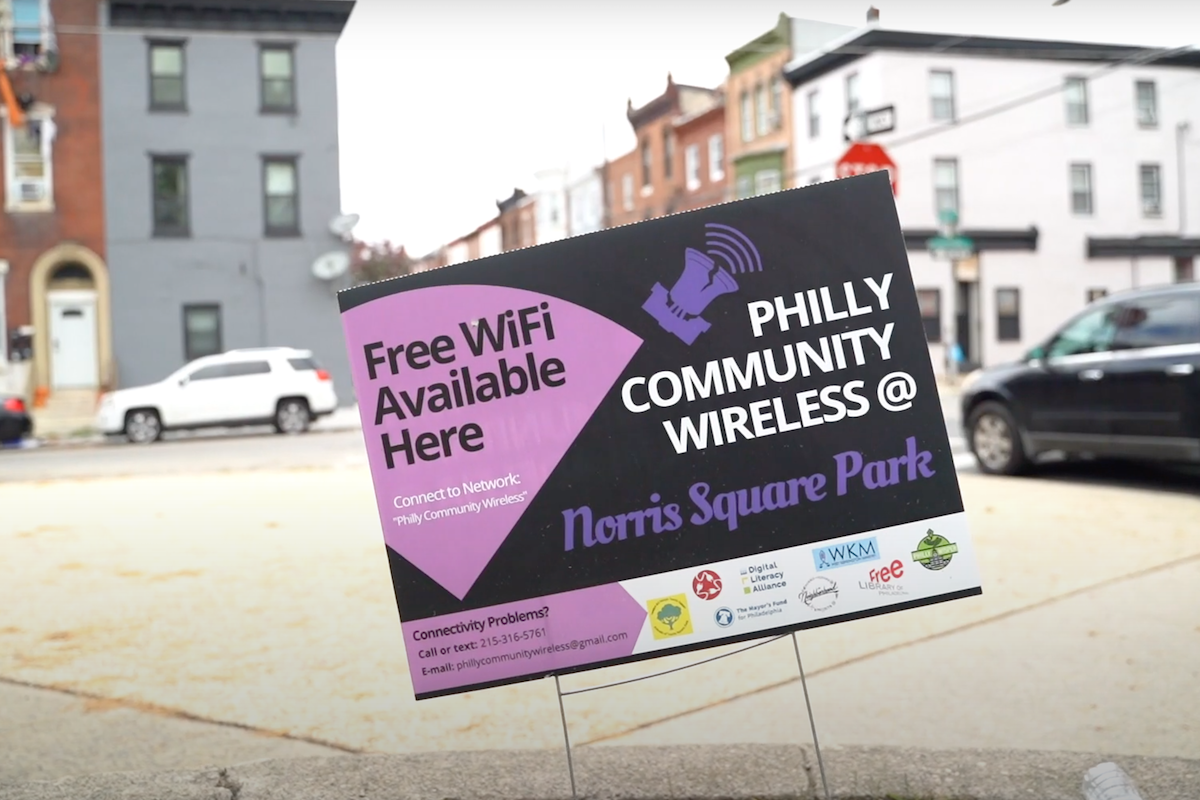When the pandemic hit the Philadelphia region in 2020, the city’s existing digital divide issues became impossible to ignore.
Thousands more people relied on internet in their homes for the work and schooling they usually did elsewhere. The City of Philadelphia, along with state and federal government, has been working on the issue alongside private partners over the last two years.
In the fall, we got a clearer picture of where internet access stood: In 2019, about 70% of Philadelphia households had access to high-speed broadband access. Data from phone survey of residents this summer showed about 84% of Philadelphia households have broadband access as of 2021, thanks in part to programs like the City’s PHLConnectED, Comcast’s Internet Essentials and the federal Emergency Broadband Benefit, now the Affordable Connectivity Program.
But a gap persists.
A group of about a dozen technologists and community members have been working on a project called Philly Community Wireless, an effort to bring internet infrastructure to neighborhoods in North Philadelphia. Alex Wermer-Colan, the digital scholarship coordinator at Temple University Libraries’ Loretta C. Duckworth Scholars Studio, is the project’s admin lead.
“When the pandemic first started, a group of community technologists and people like myself got together started talking about grassroots solutions to the digital divide,” Wermer-Colan told Technical.ly. “There were great examples of projects like this in other cities, and people from Baltimore and New York who walked us through successful projects.”
What they were aiming to create was a mesh network of net-neutral broadband internet in North Philadelphia that would provide wireless internet to anyone in its radius. A community partner in the project, Mark Steckel, would become a vital part of the vision: As founder and owner of fixed wireless provider PhillyWisper, Steckel’s existing internet infrastructure offering connections to homes and buildings throughout the city provided a way to build a community-owned mesh network of internet on top of it.
The system uses a series of Wi-Fi extenders that can relay signal without the wire connection usually needed to bring broadband into a home. Through antennas that residents have volunteered to mount on their home, the signal is passed across rooftops, hitting routers in folks’ homes. The signal creates accessible, free Wi-Fi for anyone within the signal’s boundaries.
“It’s almost the equivalent of hot spots, but in a much more sustainable way,” Wermer-Colan said.
The group learned of PhillyWisper through Devren Washington at the Media Alliance Project, and approached Steckel about the idea. They wanted to increase internet access, and learn from his experience starting an internet service provider.
“Starting an ISP has both large technical, operations/infrastructure and cost hurdles,” Steckel said. “After early conversations with [group organizers], and knowing their goals, I decided offer PhillyWisper’s assistance to help PCW by leveraging our existing infrastructure and by providing free bandwidth.”
The group identified the Norris Square area to begin building, and its tech team got to work. Philly Community Wireless’ tech lead, Addie Barron, said PhillyWisper provided labor and network equipment, as well as the backhaul to connect Philly Community Wireless’ network to the rest of the internet. The tech team handles designing the network, selecting and purchasing equipment, configuring the equipment, installing it in people’s homes, and maintaining the network.
The tech team also runs the project’s technical documentation and website, and is currently working on some software projects including digital maps for the network. They’re also doing some R&D on new technologies and projects the group could add in the future, like solar power, which they may try to incorporate into solar-powered antennas in the future.

Alex Wermer-Colan during an install. (Image via “Philly Community Wireless” short film, produced by Big Picture Alliance and directed, filmed and edited by Eli Laban)
Meanwhile, the the outreach team works on getting the word out, seeking out people who may host antennas and identifying areas of need. It costs about $200 to connect a house to high-speed internet through an antenna, and those who wish to assist in the project can offer up their home to house one or can donate to the cause. The group has received funding from the Digital Literacy Alliance and the Independence Public Media Foundation.
Philly Community Wireless is now run by a handful of key organizational leads, a small staff, a steering committee and a technical advisory board. It has Norris Square community partners such as Friends of Norris Square Park and the Kensington Branch of the Free Library, and some citywide partners in Philly Tech Justice, HACE and Temple’s Computer Recycling Center and Digital Equity Center.
In summer 2021, Philly Community Wireless launched public Wi-Fi in Norris Square Park that extended a few-block radius around the park. The org aims to expand north and west of that location into Fairhill. These neighborhoods align with Steckel’s existing infrastructure, and represent some of the neighborhoods with lowest broadband access. They also have a great network of existing community groups to work with, Wermer-Colan said.
And with this growth, Philly Community Wireless is aiming to add two paid positions, the sole employees of the org. Chris Mehretab has joined as the org’s part-time community engagement liaison, who’s role focuses on spreading awareness of Philly Community Wireless to homes, businesses and organizations around Norris Square Park.

Chris Mehretab points to an antenna in Kensington. Image via “Philly Community Wireless” short film, produced by Big Picture Alliance and directed, filmed and edited by Eli Laban)
The group is also hiring a full-time project manager to lead the initiative over the next two years. It’s funded by the IPMF grant, and Mehretab’s position is funded by the Digital Literacy Alliance funding.
Wermer-Colan said the group is doing more fundraising that will support more paid positions in the years to come, ideally pairing digital literacy training programming with a small-scale workforce initiative in Kensington and Fairhill over the next decade. In 2020, the group was focused on planning, 2021 was about building the foundation, and 2022 will be the year that the project really takes off, Wermer-Colan said.
Philly Community Wireless’ goal, ultimately, is to provide stable, sustainable internet to Philadelphians, and to help communities reclaim some power from private utilities companies.
“What’s exciting about this project is it can help people understand that public utilities can give us some control, and neighbors have community control. And we can recognize how our shared space can give back to each other,” Wermer-Colan said. “Access is about infrastructure and adoption is community buy-in. Projects like this are kind of invisible, and so we’re hoping to make people aware and involved in this infrastructure, and that their neighbors are the type of community that can fight gentrification.”

Technical.ly is one of 20+ news organizations producing Broke in Philly, a collaborative reporting project on solutions to poverty and the city’s push toward economic justice.
Before you go...
Please consider supporting Technical.ly to keep our independent journalism strong. Unlike most business-focused media outlets, we don’t have a paywall. Instead, we count on your personal and organizational support.
Join our growing Slack community
Join 5,000 tech professionals and entrepreneurs in our community Slack today!

Look inside 4MLK, the University of Maryland BioPark’s new 250k-square-foot life sciences hub

Nonprofits are training AI chatbot ‘employees’ to take over tasks that cause burnout and stress

Supreme Court upholds TikTok ban, as creators and communities brace for impact


